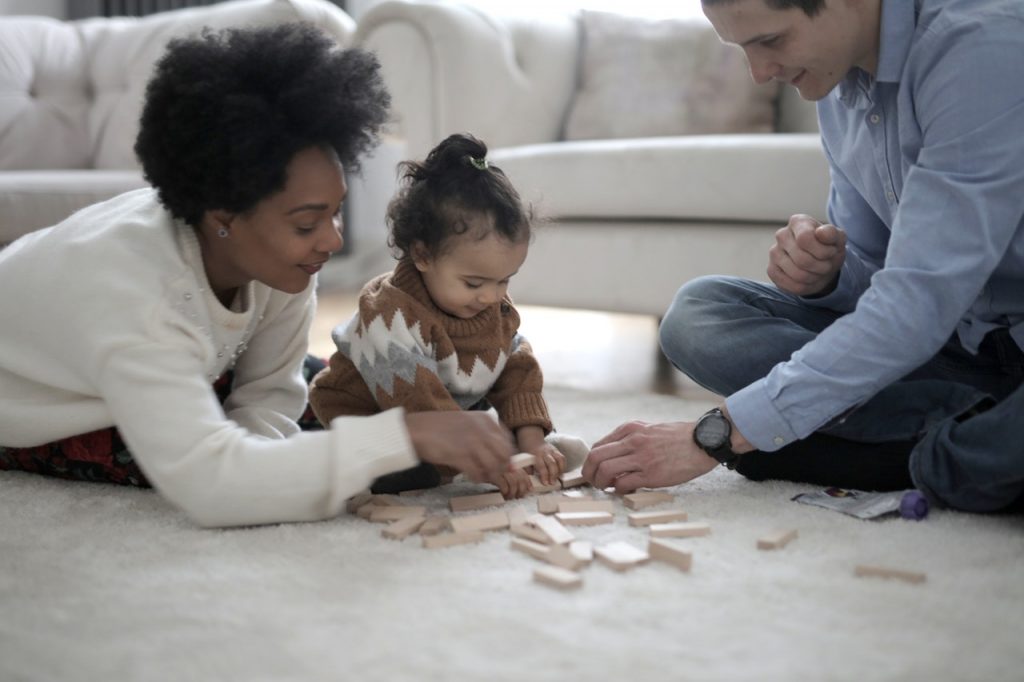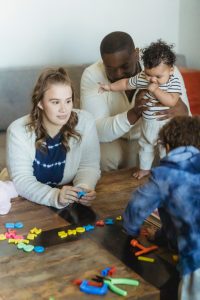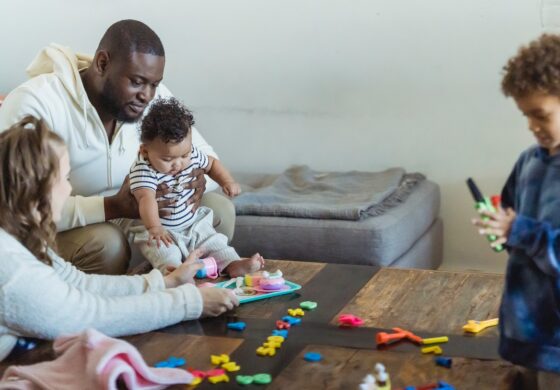Occupational therapists are uniquely trained as the primary professionals educated in treating and building skills relating to the sensory systems. We are highly skilled in identifying signs of sensory overstimulation, decreasing aversions to bright lights, loud noises, or messy textures, increasing body awareness through proprioceptive activities, and so much more! With our unique sensory lens and knowledge of developmental milestones, we’re able to look at the difficulties that a child may be experiencing with processing sensory input and how this impacts their participation in play, school, dressing, feeding, or social interactions.

Keep reading to learn more about the ways that occupational therapy (OT) can help kiddos build sensory skills for all eight (yes, eight, not five) senses.

- Visual
Does your little one love lots of visual input? Bright lights, busy patterns, and games like Where’s Waldo? might be their favorite. Or, do they become overwhelmed and frustrated when they can’t seem to figure out where to visually focus? Do they “lose” their shoes, even if they’re right next to the door in plain sight? All of these occur because of how the visual system is functioning, and OT can help kiddos learn to make sense of the visual information they’re seeking or avoiding through the development and refinement of visual-perceptual skills.
- Auditory (hearing)
Do you notice that your child covers their ears when they hear loud household noises such as the toilet flushing, the blender, or the vacuum? Is the sound of the garbage disposal *terrifying* in your household?! Or, does your little one seem to crave loud noises? Are they constantly turning music or the TV louder? Do you feel like you’re apologizing to your neighbors every time you see them for the most recent attempt at a one-man-band your child has made with the mixing bowl and spoon? In OT, it’s our goal to help kiddos learn how to calm and balance their auditory sensory preferences to feel more comfortable in the world around them. We do this through sound-based interventions and auditory-based activities!
- Olfactory (smell)
Some kiddos have an incredibly sensitive sense of smell, to the point where they may feel nauseous or gag if they smell strong smells or foods! It’s very common for children with olfactory avoidance behaviors to also struggle with feeding, so definitely check out our recent blog post, 10 Signs That Feeding Therapy Might Be Right for Your Toddler, if this is a concern for your little one.
- Gustatory (taste)
Like we shared above, it’s incredibly common for children to struggle with both sensory processing and feeding! Some little ones just feel that new tastes and flavors are completely overwhelming. They can’t fathom mixing flavors together – peanut butter and jelly sandwiches? No. Pasta with red sauce? NOPE. If this sounds like your kiddo, occupational therapists who specialize in feeding are here to help!
- Tactile (touch)
Does your little one have opinions about what they will and absolutely WILL NOT touch? Do they have STRONG preferences about everything from the clothes they wear to the texture and consistency of their food?! Are they unable to wear a jacket because it’s too scratchy or constricting, or does it seem like the world is ending if they have sand in their shoes? All of these difficulties are the bread and butter of OT, and we’re here to help! We LOVE sensory play, getting messy, and working to reduce those strong reactions to different tactile sensations.
- Vestibular
Does your child jump everywhere they go? Do you sometimes find them hanging or laying upside down on the couch? These behaviors are all related to the vestibular system! The vestibular system is housed in the ear, and it is what provides the body with information about balance and spatial awareness. It supports balance and provides our bodies with information about the position of our head in relation to the environment (if we’re upside down, swinging back and forth, or spinning in circles). Occupational therapists are incredibly skilled at treating the vestibular system. Whether your child is fearful of having their feet off the ground (what we call gravitational insecurity), being upside down, or if they LOVE to spin in circles, it is our goal to provide an engaging level of vestibular input, and we develop it in a safe and fun way.
- Proprioceptive
The proprioceptive sense is one of the lesser-known sensory systems, but it’s oh-so-important! Proprioception is the skill of being aware of where the body is in the environment. There are proprioceptive sensory receptors inside our muscles and joints that tell our brain where our bodies are in space. Then, the brain uses this information to make coordinated movements! Does your little one constantly bump into walls, corners of counters, or trip over their own feet? Do they push too hard while writing with their pencil, often breaking the lead? When they use a fork, do you sometimes worry about your plate breaking from the amount of pressure they use? All of these are signs that your child could benefit from OT to improve body awareness and proprioception! For some kiddos, some of these activities may include obstacle courses, wheelbarrow walks, or animal walks. For other kiddos, we might incorporate movements such as closing our eyes and touching our nose!
- Interoception
Interoception is another sense that isn’t very well-known, but it’s probably one of the most important senses! Interoception is how the brain communicates what’s going on inside the body. It’s how we know whether we’re hungry or thirsty, that we need to go to the bathroom, or even that we’re mad or frustrated! Occupational therapists can work with kiddos to help them recognize these feelings and sensations to improve their ability to respond to them in an appropriate way.
If you read through this and resonated with the experience of having a child with strong sensory preferences, book a FREE consultation with one of our amazing occupational therapists today!

